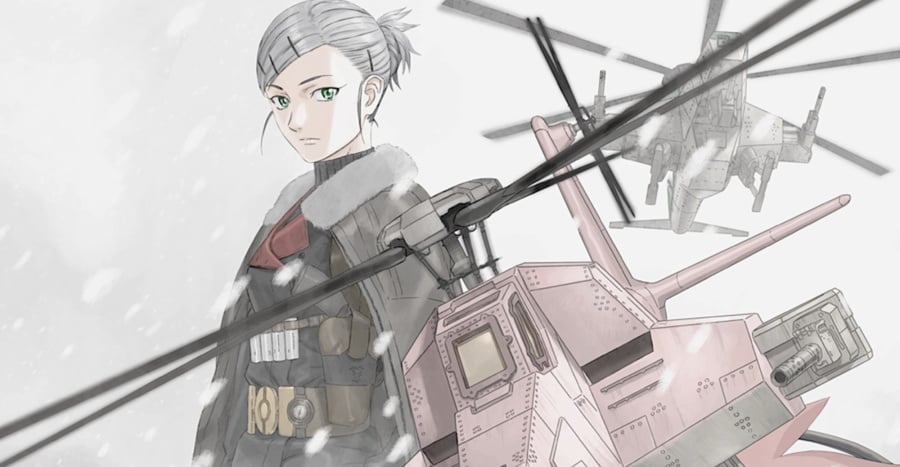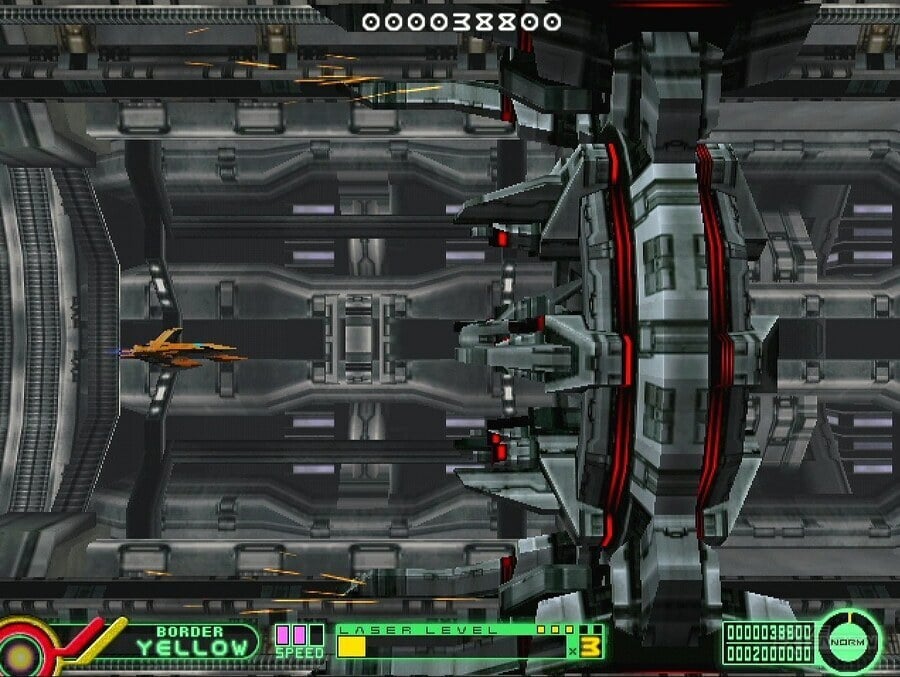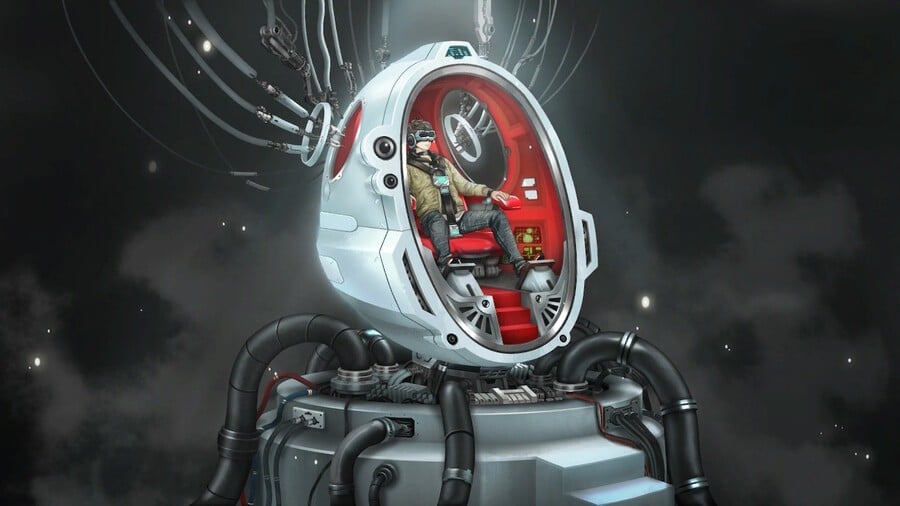
I was running late. Proper late.
See, I was supposed to be interviewing Hiroyuki Maruyama, the founder of G.Revolution (G.rev) that afternoon. That meant a trip out to the Tokyo suburbs, where the company HQ was run out of a small, nondescript office.
Normally I’m pretty good with directions. But this was 2011; smartphones weren't as commonplace as they are now, I didn't have Google Maps, and I was relying on handwritten notes to get around. So when I missed my connection and accidentally jumped an express train to the country, it blew out my entire schedule.
None of this was helped by the worst hangover in the world. Two nights prior I had been drugged and robbed in a Yakuza dive bar somewhere in Kabukicho…
But that’s a whole other story (which, as luck would have it, you can read here). All you really need to know is that I was in Japan, had scheduled an interview with the company behind legendary shooters like Border Down and Under Defeat, and was running precariously late.
A Huge Battleship Is Approaching Fast

G.rev had been founded 10 years prior by Maruyama and a group of former Taito employees to focus on classic shoot-em-ups, a genre that the mainstream had long given up on. Financing a game’s development ain’t cheap, and the newly formed company took on contract work from Treasure to help fund their start-up, ultimately assisting on both Ikaruga and Gradius V.
Ignoring a low-key puzzle game they released in 2001, G.rev made their proper debut in 2003 with Border Down. A much loved horizontal shmup, Border Down stood out for its unique level design, which allowed players to choose from three different level paths, aka ‘borders’. Originally released in arcades for Sega’s Naomi system, it was ported to Dreamcast shortly after. Senko No Ronde followed in 2005. Known as WarTech in the west, it fused bullet-hell-shooter with arena combat. Like its predecessor, it debuted in arcades and was later ported to the Xbox 360.
My introduction to G.rev came via their next release, Under Defeat. While it looks like a classic military shooter from the early '90s, players can “lock” the direction of their firepower, so movement and aim are separate. The arcade game was well received, but it’s the Dreamcast release that enjoyed all the attention. Marketed as the console’s final game, it came out in 2006 via a limited physical release available via sites like Lik-Sang and Play Asia.
While G.rev was never going to trouble the games charts or high street retailers, the bills were being paid and the team had the creative freedom to pursue the shmup genre down experimental rabbit holes.
Rocking The Suburbs
Things had slowed considerably by the time I visited in 2011. Senko no Ronde iterations were the company’s bread and butter at this point, and a handful of staff worked out of a small office in a suburban backlot. After all the drama with the trains, the maps, and the drugging, I was almost an hour late to our meeting and mortified by my gaijin-like oafishness.
To his credit, Maruyama was very warm and forgiving. We spoke about Taito, his start-up endeavours, and the challenges of finding an audience for his particular brand of shooters long after they had fallen out of public favour.
Unfortunately, that particular interview has been lost to time. For reasons I can no longer remember the article never ran, and despite going back through several old inboxes, I can’t find any interview transcripts or associated details. Did I dream it all?
That hazy confusion is an apt metaphor for the broader Japanese games industry as the '00s came to a conclusion. These would come to be known as the bad years. A period of flux as the industry transitioned from PS2 to PS3 and Japanese game devs found themselves superseded by their western counterparts in expertise, budget and popularity.
This Is Hardcore
Maruyama was interviewed by the Gen16 website around the same time as my ill-fated visit. That particular interview did make its way online and found him lamenting the industry’s new landscape and what that meant for niche indies like G.rev.
"As a small studio, we feel very blessed to have been able to release several original titles since incorporating in 2000," he began. "In that respect, it has been a good 10 years. However, in terms of our growth as a company, unfortunately, there are several issues that have prevented our ability to expand and we are still a small company. So we certainly are not satisfied. The current game market, user needs, and the general environment has changed so much since we first started. Up until now, we have created games from the stance that they are games we wanted to make. In the future, we may have to adjust our perspective."
Ultimately, G.rev decided to double down on their hardcore credentials. The next few years would see them release a new shooter for Xbox Live Arcade (Strania), another new shooter for 3DS (Kokuga), and the physical release of Under Defeat on Xbox 360 and PS3.
Unfortunately, none of it came to much. From all accounts Strania failed to meet sales expectations, Kokuga sank without a trace (despite being directed by Hiroshi Iuchi of Radiant Silvergun and Ikaruga fame), and I picked up my PS3 copy of Under Defeat for $10 from a bargain bin.
G.rev then transitioned to a series of work-for-hire projects and mostly fell off the radar. That radio silence was finally broken earlier this year when they were credited with the shmup levels in adventure / puzzle game Yurukill: The Calumniation Games.
Japan Is Over
If G.rev was struggling with the changing development landscape at the end of the '00s, they certainly weren’t alone. Mega Man designer Keiji Inafune infamously stated, "Japan is over. We're done. Our game industry is finished," at the Tokyo Game Show in 2009.
That may have been hyperbolic, but it reflected broader concerns. This was an era that saw many developers close up shop as audience tastes changed, budgets increased and Japan found itself struggling to compete in a new global marketplace.

On the other end of the spectrum, the infrastructure that would allow an indie resurgence to blossom was still in its infancy. Digital distribution was tightly controlled and curated, limited edition physical games were a novelty, and the public’s appetite for strange, retro-inspired indies was an untapped market.
Which is how I found myself in a small, cramped office on Tokyo’s fringes, asking Maruyama if there was any money in all this. The short answer, apparently, is there wasn’t.
A New Hope
Fast forward 10 years, and I’m as surprised as anyone to see the name G.rev. pop-up once again. I honestly thought they had gone the way of the dinosaurs.
But maybe this story does have a happy ending. All those elements that conspired against them 10 years prior have come full circle. Shmups are back, digital distribution is ubiquitous, and I’m sure there's a ready audience for physical reprints of Border Down and Under Defeat.
Now if I could just find the transcript of that interview from 2011.






Comments 0
Wow, no comments yet... why not be the first?
Leave A Comment
Hold on there, you need to login to post a comment...